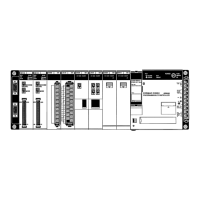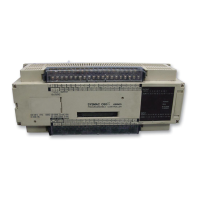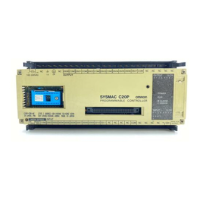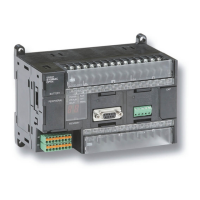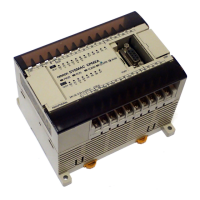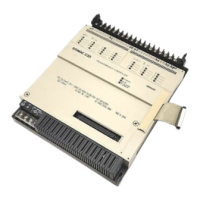178
Description When
the execution condition
is OFF
, ZCPL(––) is not executed. When the exe
-
cution condition is ON, ZCPL(––) compares the 8-digit value in CD, CD+1 to the
range defined
by lower limit LL+1,LL and upper limit UL+1,UL and outputs the
result to the GR, EQ, and LE flags in the SR area. The resulting flag status is
shown in the following table.
Comparison result
Flag status
GR
(SR 25505)
EQ
(SR 25506)
LE
(SR 25507)
CD , CD+1< LL+1,LL 0 0 1
LL+1,LL ≤ CD, CD+1 ≤ UL+1,UL 0 1 0
UL+1,UL < CD, CD+1 1 0 0
Precautions Placing
other instructions between ZCPL(––) and the operation which
accesses
the
EQ, LE, and GR flags may change the status of these flags. Be sure to
ac
-
cess them before the desired status is changed.
Flags ER: Indirectly
addressed DM word
is non-existent. (Content of
∗
DM word is
not BCD, or the DM area boundary has been exceeded.)
LL+1,LL is greater than UL+1,UL.
EQ: ON if LL+1,LL ≤ CD, CD+1 ≤ UL+1,UL
LE: ON if CD, CD+1 < LL+1,LL.
GR: ON if CD, CD+1 > UL+1,UL.
Example Refer
to
5-17-6 AREA RANGE COMP
ARE – ZCP(88)
for an example. The only
difference
between ZCP(88) and ZCPL(––) is the number
of digits in the com
-
parison data.
5-17-8 SIGNED BINARY COMPARE – CPS(––)
Cp1: First compare word
IR, SR, AR, DM, HR, TC, LR, #
Cp2: Second compare word
IR, SR, AR, DM, HR, TC, LR, #
Ladder Symbols Operand Data Areas
CPS(––)
Cp1
Cp2
Description When
the execution condition is OFF
, CPS(––) is not executed. When the exe
-
cution
condition is ON, CPS(––) compares the 16-bit (4-digit) signed binary con
-
tents
in Cp1 and
Cp2 and outputs the result to the GR, EQ, and LE flags in the SR
area.
Note 1. Refer to page 29 for details on 16-bit signed binary data.
2. Refer to 5-17-2 Compare – CMP(20) for details on saving comparison re-
sults.
Precautions Placing
other instructions between CPS(––) and the
operation which accesses
the
EQ, LE, and GR flags may change the status of these flags. Be sure to
ac
-
cess them before the desired status is changed.
Data Comparison Section 5-17
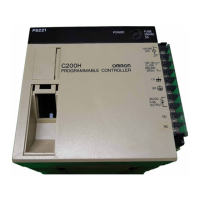
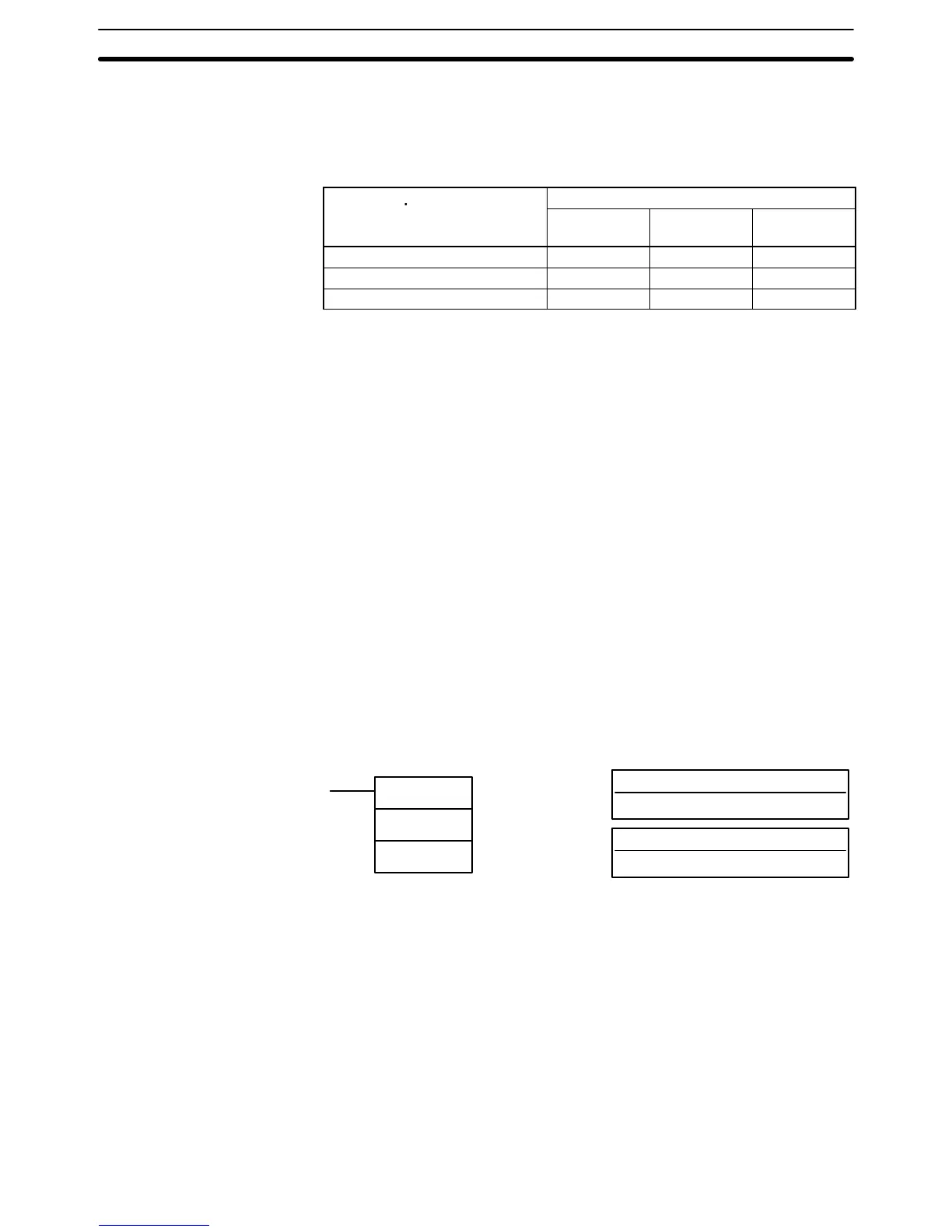